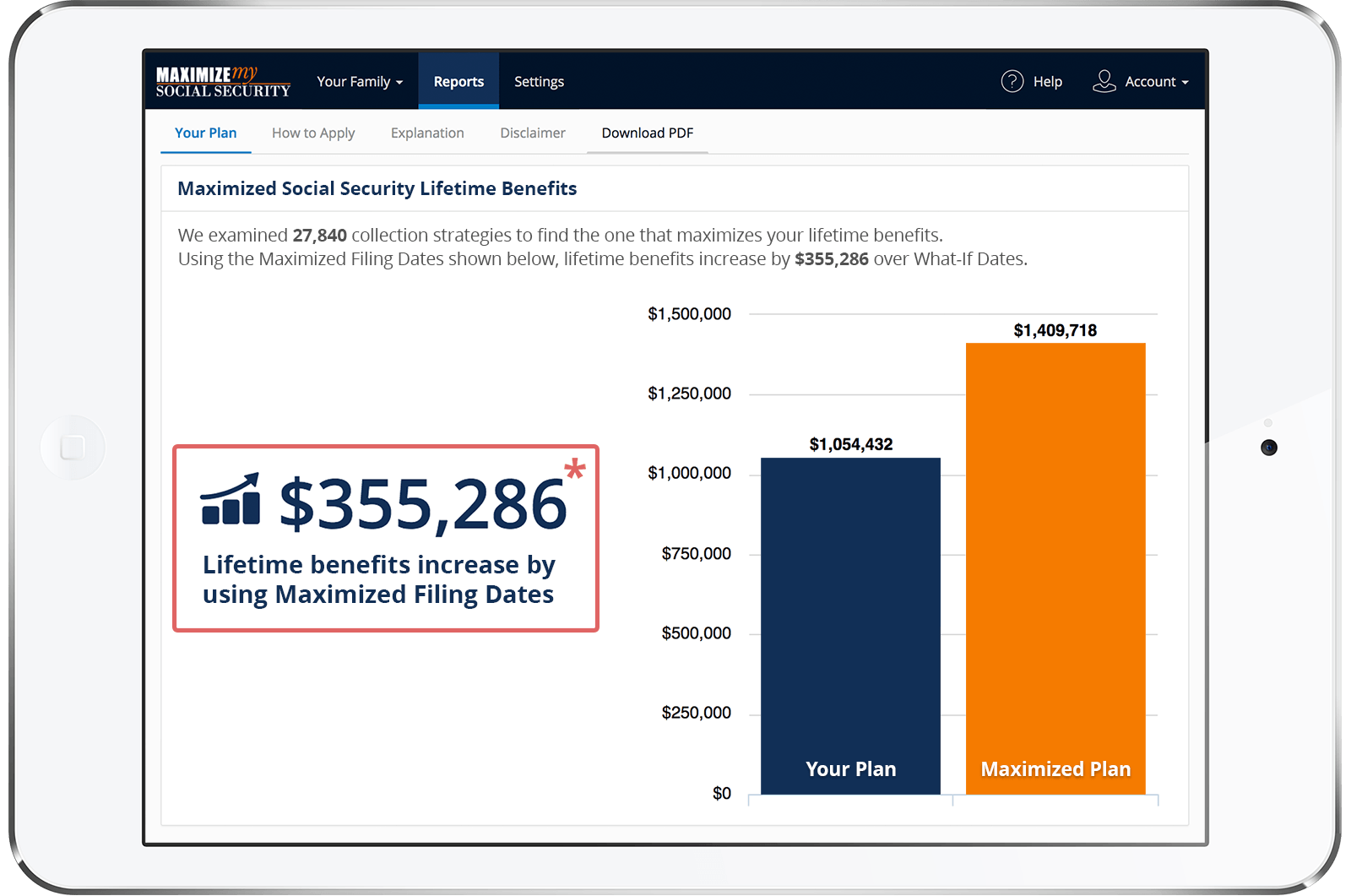Your "Ask Larry" response under the topic "How Does A Combined Family Maximum Work?" closely addresses our family situation (two parents at FRA and 1 Disabled Adult Child). Specifically, your response states that total family benefits are not limited to the combined family maximum; that is only the limit payable on one parent's record. So the total payable is actually the lesser of the statutory limit or the sum of the combined family maximum plus the PIA of the lower earning spouse. (Our family benefits are not close to the statutory limit, so that is not a factor.) The software available here estimates that our total family benefits should be somewhat greater than the combined family maximum.
Here are the specifics for our family:
Father's PIA $2454.70
Mother's PIA $307.30
Family Max based on Father's Earnings $4297.10
Family Max based on Mother's Earnings $461.40
Combined Family Max $4758.50Today when I applied to the local office for SS retirement benefits at FRA, they initially stated that the total payable to our family is the family maximum on the Father's record plus the Mother's PIA. I asked them to re-compute the benefit based on the combined family maximum. After recalculating they agreed that would give a higher total benefit, but the total benefit would then be limited to no more than the combined family maximum. My understanding, based on the software available here, is that our total family benefit should be somewhat higher than the combined family maximum. I have not received the benefit determination in writing, so it may be that they will change the answer again before making a final determination. However, if I end up needing to appeal their decision, can you please point me to the specific rule(s) that show that the payable amount can exceed the combined family maximum by an amount up to the PIA of the lower earning spouse? Thank you.
Hi,
The rules governing family benefit rates are complex and confusing when a combined family maximum is involved. I'm not sure exactly what you're looking for, but the basic rules governing family benefit calculations in cases like this are covered in the following section of Social Security's operations manual: https://secure.ssa.gov/apps10/poms.nsf/lnx/0300615768. Maybe it will help clear things up if I explain how it would work using the amounts cited in your question. I'll assume that the disabled adult child only qualifies for those benefits and not also for disability benefits based on their own work record (SSDI). I'll also use cents in the calculations, although Social Security would end up rounding down all of the amounts to even dollars.
Benefits would be paid in this case on the father's record since his PIA is higher. First, you would start by subtracting his primary insurance amount (PIA) from the combined family maximum (CFM). That would yield a difference of $2303.80 potentially available to be paid to eligible family members. So, the wife and child could potentially each be paid as much as $1151.90 per month (i.e. $2303.80/2) from the father's account.
However, the wife in this case is also entitled on her own account, which is referred to as dual entitlement. A dually entitled person can only receive effectively the higher of their 2 rates, but they would always be paid on their own record first. So, what would happen in this case is that the wife's PIA would be subtracted from her share of the CFM available for family members, which would leave an unreduced spousal rate of $844.60 (i.e. $1151.90 - $307.30). If no reduction for age is involved, the wife would then get her full PIA plus the $844.60 spousal rate for a combined benefit amount of $1151.90.
The $307.30 apportioned to the wife in this case from her own account would then be available to be redistributed to the disabled adult child. But, the child could not be paid more than 50% of the worker's PIA, which would amount to $1227.35 (i.e. $2454.70/2). Thus, the child in this case could be paid a full half of the worker's PIA, or $1227 instead of $1151, assuming that the child isn't also entitled to SSDI. The wife would not be eligible for a full half of the worker's PIA, though, because a dually entitled person isn't eligible to share in the redistribution of amounts paid to dually entitled family members on their own accounts.
The actual monthly payment amount for the father and mother in this case would depend on whether or not any reduction for age is involved for starting benefits prior to full retirement age (FRA), or if delayed retirement credits (DRC) are involved due to starting benefits after FRA. By the way, our software is fully programmed to handle all of the calculations involved in a case like this, so you may want to consider using it to determine whether or not Social Security ends up calculating your benefits accurately.
Best, Jerry
